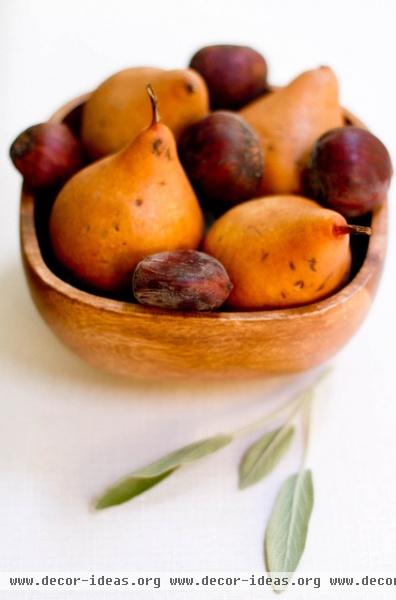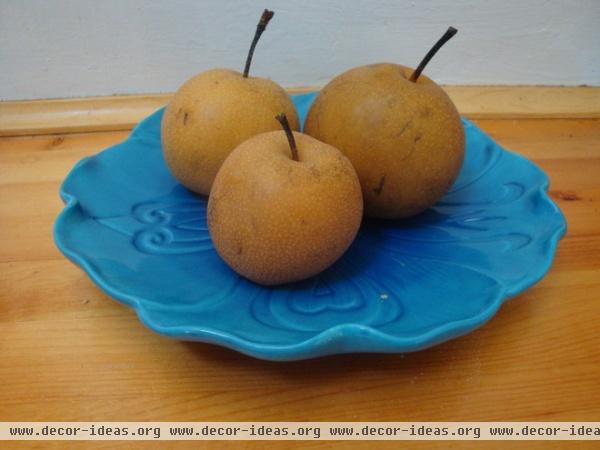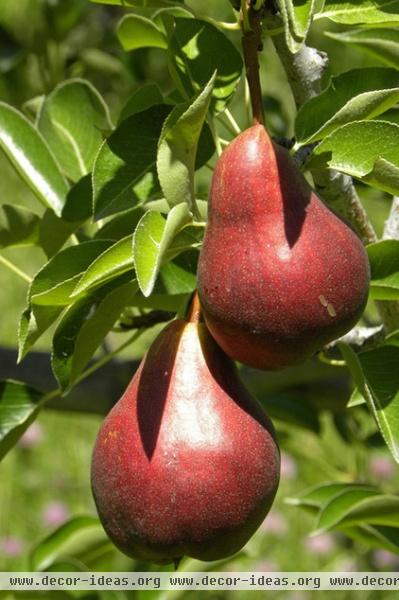How to Grow Your Own European and Asian Pears
The long-lived pear tree offers beauty and bounty at the same time. It’s a beautiful tree, boasting spring blossoms, fall color and interesting winter branches. European pears are the better-known members of the pear family, but Asian pears (also known as apple pears) are gaining in popularity, as are pear hybrids.
European pears need cold to do well. Most need at least 600 hours of winter chill, although there are low-chill varieties. European pear trees are also quite large, reaching 40 feet tall and 25 feet wide, which might be overwhelming in a small garden. There are semidwarf and dwarf varieties available, though, and they’re also a good choice for espaliering.
Asian pears don’t require as much chill, only about 400 hours, but don’t handle winter lows below -15 degrees Fahrenheit (26 degrees Celsius). They tend to blossom earlier than their European relatives. They’re also smaller than European pears, and you can prune them enough to keep them in bounds. Hybrid European-Asian pears lean toward their European background in looks and taste but do better in climate extremes, especially colder weather.
Most pears need a pollinator for the best fruit production. If you don’t have room for two trees, consider a rootstock with several varieties grafted onto it.

Where they will grow: Both European and Asian pears do well in all but the coldest and warmest climates, so you can grow them easily in USDA zones 5 to 9, and some of the toughest European pears can be grown down to zone 3. Newer hybrids are being bred to handle more cold or need less chill, so check with nurseries for varieties for your climate.

Favorite European pears: Anjou (d’Anjou, Beurre d’Anjou), Bartlett, Blake’s Pride, Bosc (Buerre Bosc, Golden Russet), Comice (Doyenne du Comice, Royal Riviera), Conference, Flemish Beauty, Flordahome, Harrow Delight, Hood, Luscious, Magress, Moonglow, Orcas, Parker, Patten, Rescue, Secket, Summer Crisp, Sure Crop, Warren, Winter Nelis
Favorite Asian pears: Chojuro, Hosui, Ichiban, Kikusui, Korean Giant, Kosui, Nijisseki (Twentieth Century), Seuri, Shinko, Shinseiki, Shinsui, Ya Li
Favorite hybrid pears: Fan, Kieffer, Orient, Ure

Planting notes: Plant bare-root trees in late winter or spring. You can plant container-grown trees year-round, as long as the soil can be worked, but avoid high temperatures so you don’t stress the newly planted tree.
Look for a European or hybrid tree with a strong pyramid shape; an Asian pear should have a strong central trunk. If you want to espalier, check for strong vertical branches.
Choose a sunny spot with well-drained soil, although pears can handle heavy or damp soil better than other fruit trees. Dig a hole that is as deep and twice as wide as the rootball. Spread out the roots, fill in with soil and water thoroughly. Trim off any weak or stray branches. Add mulch, keeping it away from the trunk.
Care requirements: Water deeply and regularly, keeping the roots moist but not overly soggy. Fertilize with a balanced fertilizer in the spring, applying about 1 pound of fertilizer for each inch of the trunk diameter. Asian pears may not need any fertilizer at all. Don’t overfertilize; applying too much can increase your chances of fire blight, a problem with pears.
European and hybrid pears usually don’t need thinning. Thin Asian pears once the fruit has set, leaving one pear per spear and a minimum of 6 inches between each piece of fruit.
Pruning: Prune at the end of the dormant season. You’ll need to be vigilant, as the trees are enthusiastic growers. You might need to do summer pruning for European pears.
Both types of pears grow straight up to start; European pears spread out as they age. With either type, encourage outward rather than upright growth, which will make it easier to harvest the fruit.
When the trees are small, remove any branches growing at a narrow angle to encourage an open center. Hanging light weights on the limbs will help train the branches to spread outward rather than upward.
Prune yearly to shape the trees and keep the centers open. Remove dead and dying branches, suckers and waterspouts. Cut back older branches to encourage new growth.
If you’re espaliering your pear tree, choose strong lateral branches and remove any wayward branches.
Pests and diseases: Fire blight is the first and most dreaded problem. You’ll know when you have fire blight; the tree’s branches and leaves will look like they’ve been burned. It’s a fast-moving disease that is difficult to eradicate.
Start with a disease-resistant variety. If you see affected branches, cut them back well beyond the infected area and disinfect your pruning tools between each cut.
Pests include pear psylla and codling moth.
Harvest: Harvesting European pears at the right time, with the exception of ‘Seckel’, can be difficult. You have to pick them before they’re actually ripe and then let them ripen off the tree.
Harvest when the color is starting to change and if the fruit snaps off the branch when you gently lift the pear up until the branch is parallel with the ground. Refrigerate early-ripening pears for up to three weeks, then bring them to room temperature to finish ripening. Keep late-ripening pears in a dark, cool room, then bring them into a warmer area about three days before you’ll eat them. Store pear favorites ‘Anjou’, ‘Bosc’ and ’Comice’ in a room with temperatures between 32 and 40 degrees Fahrenheit (0 to 4 degrees Celsius) for a month, then bring them into a warmer room to finish ripening. If refrigerating, store them while still they’re underripe.
Asian pears can stay on the tree. Check for ripeness as for European pears. They tend to have a long harvest season rather than a sudden burst of ripe fruit, so you won’t be overrun with produce.
More: How to grow more fruit trees












